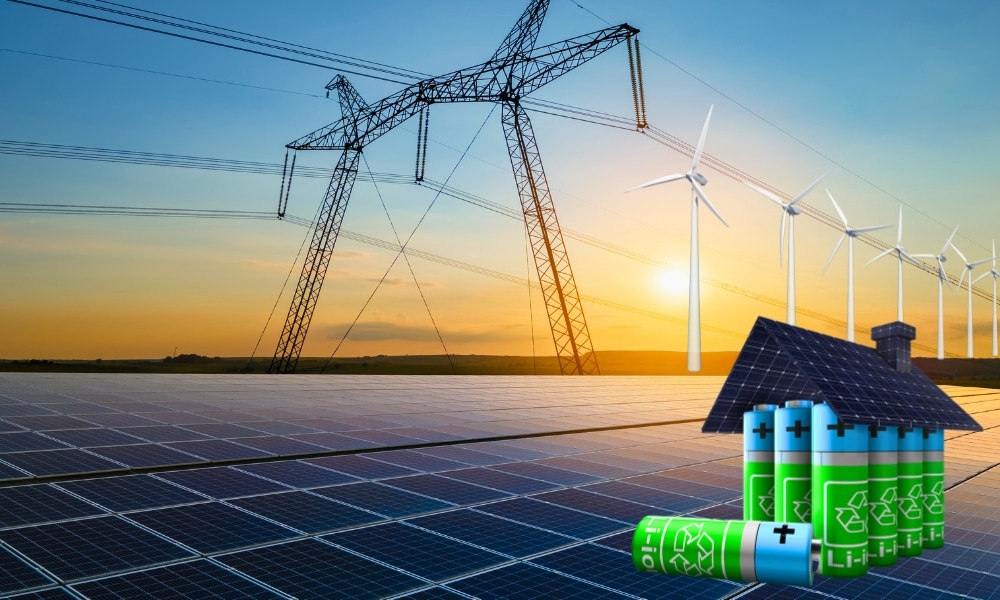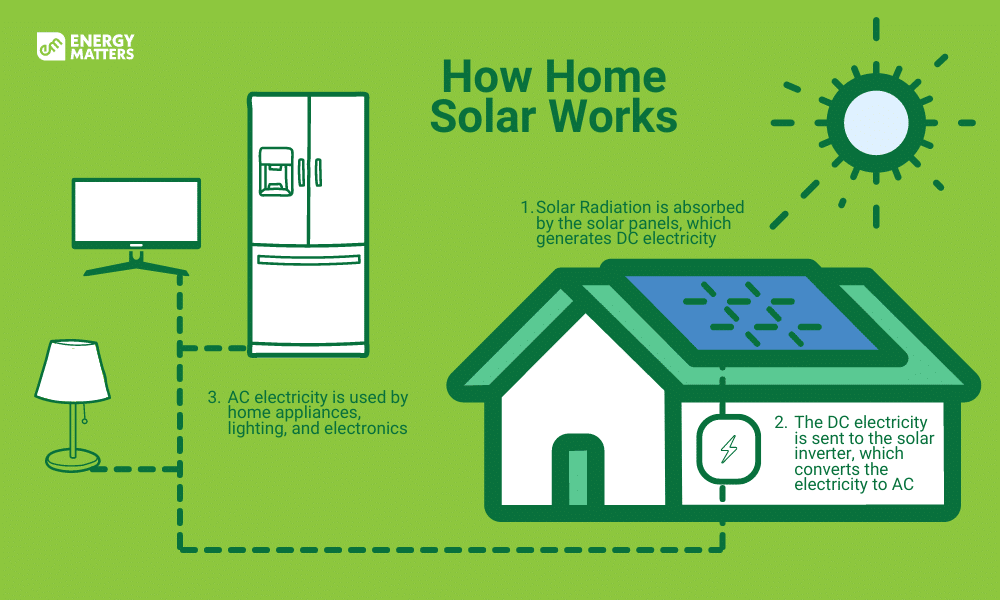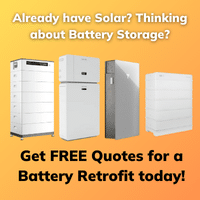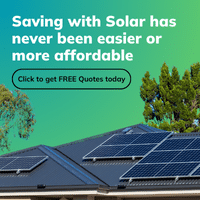You can have solar energy powering your home, school, church, community building or business easily and economically by installing a mains electricity supply integrated grid-connect solar system. If you’re wondering what this means, it’s simply a rooftop solar system!

Empowering your space with solar energy is a practical and economical choice. If you’re considering the shift to a grid-connected solar rooftop system, take the next step seamlessly with Energy Matters. Get FREE solar quotes, making the transition to sustainable energy both effortless and informed for your home, school, church, community building, or business.
Explore grid connected solar power systems
Over the life of a PV system, you’ll be able to power your home with electricity cheaper than what you pay for from the grid. Learn more about grid-connect home solar power systems.
Businesses large and small can reduce carbon emissions and electricity bills by installing solar power systems! Learn more about the financial opportunities and benefits for businesses.
While the school grant is no longer available, a solar installation can cut your school’s power bills. If your school is in a remote area and unable to connect to the main grid, other rebate programs may be available.
The Australian Government is currently offering incentives and subsidies that can reduce the cost of a PV power system installation for a community or church building substantially!
In a remote location away from the mains grid and need a stand-alone power solution? We have all the information you’ll need regarding equipment, systems, and rebates!
When you’re ready to make the switch to solar, Energy Matters is here for you! We provide FREE quotes via a nationwide network of trusted solar installers. Begin your solar journey today!
Understanding grid connected solar systems
Does the idea of generating electricity from the sun seem too complex? Grid-connect solar power systems are really quite simple as there are very few components!
Here’s how grid connect solar works:

- Sun shines on the solar panels that then generate DC electricity.
- This DC current is routed into a solar power inverter that inverts it to 240 volts AC, the same as your mains supply
- Any surplus electricity generated by the system not used by your appliances feeds back into the electricity supply grid. For which you receive a credit that varies depending on the state in which systems are installed.
Key components of a grid connected system
- Solar panels: These are the heart of the system, converting sunlight into electricity. Choosing solar panels is crucial, and factors like efficiency, durability, and cost should be considered.
- Solar inverter: The solar inverter converts the direct current (DC) electricity produced by the solar panels into alternating current (AC) electricity used in homes and businesses.
- Mounting system: This secures the solar panels to your roof or the ground.
- Wiring and electrical connections: These connect the various components of the system and link it to your electrical panel and the grid.
- Net metering equipment: Net metering measures the electricity you consume from the grid and the electricity you send back to the grid.
Understanding grid-tie inverters
Grid-tie inverters are a critical part of any grid-connected system. They convert DC electricity to AC and synchronise with the grid’s frequency and voltage, ensuring a seamless flow of electricity. Modern grid-tie inverters also incorporate safety features, such as automatic shutdown during a power outage.
Grid-interactive solar and battery storage
While traditional grid-connected systems don’t include solar battery storage, combining solar with battery storage is becoming increasingly popular. This allows you to store excess solar energy during peak demand periods or power outages, further enhancing energy independence. These systems are sometimes referred to as hybrid systems or grid-interactive solar systems.
Aside from the components, Energy Matters also makes installing systems simple! Learn more by reading solar panel reviews and use our calculator to find out what size system you might need.
Reduce or wipe out your power bills altogether while helping to reduce energy-related carbon emissions!
Benefits of grid connected solar
- Reduced electricity bills: By generating your electricity, you can significantly reduce your monthly electricity bills.
- Environmental impact: Solar energy is a clean, renewable energy source. By going solar, you’re reducing your carbon footprint and contributing to a more sustainable future.
- Energy independence: Grid-connected solar offers energy independence, shielding you from rising electricity costs and potential power outages.
- Increased property value: Homes with solar installations are often more attractive to buyers, potentially increasing your property’s value.
- Return on investment: While the initial investment in a grid-connected solar system can be significant, the long-term savings on electricity bills can provide a substantial return.
Grid connect solar system installation
Installing a grid-connected solar system typically involves several steps:
- Site assessment: A qualified solar installer will assess your property’s solar suitability and recommend the best system size and configuration.
- Roof orientation and shading: The positioning of panels significantly influences their solar panel efficiency.
In the Southern Hemisphere, like in Australia, solar panels should face north to maximise sun exposure. It’s also essential to ensure that the installation area is free from obstructions like trees or buildings that could cast shadows on the panels.
- System design: The solar installer will design a custom system based on your energy needs and the characteristics of your property.
- Permitting and approvals: Necessary permits and approvals will be obtained from your local authorities and utility company.
- Installation: The solar panels, inverter, and other components will be installed. Check our page for our recommended solar products.
- Connection to the grid: Your system will be connected to the utility grid.
- Inspection and commissioning: The system will be inspected to ensure it meets safety standards and operates correctly.
- Local regulations and incentives: Familiarising yourself with regional guidelines, permits, and available incentives can streamline the installation process and enhance the project’s financial viability. In Australia, for instance, various solar rebates and incentives are available to support the adoption of solar energy systems.
Take the next step with Energy Matters
By understanding the ins and outs of grid-connected solar, you can decide whether it’s the right choice for you.
Are you ready to take the next step? Energy Matters guides you through understanding and implementing your grid-connected solar system.
Energy Matters is one of Australia’s most trusted solar quotes due to our high customer satisfaction and industry recommendations. Our team of solar experts can help you get up to 3 FREE solar quotes from pre-qualified and vetted solar firms in your area. Let’s harness the power of the sun together!







































